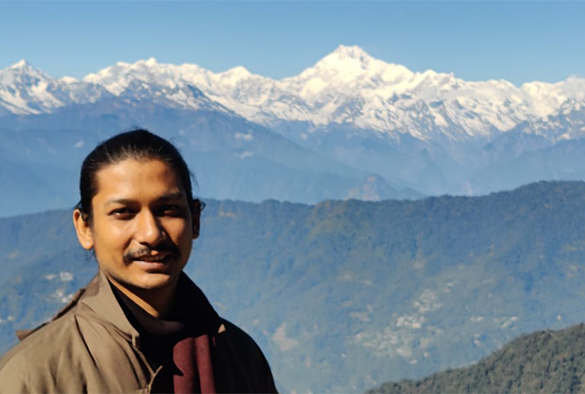New Research Associate joins QUASAR Group’s research activities for AEgIS

Last year, the University of Liverpool was the first UK university to join the AEgIS (Antihydrogen Experiment: Gravity, Interferometry, Spectroscopy) antimatter experiment which aims to measure the gravitational fall of an antihydrogen pulsed beam.
The group has now welcomed Dr Bharat Singh Rawat. His research will include simulation studies into optimum beam transport from the low energy ELENA ring to the AEgIS experiment, the efficient integration of beam and particle diagnostics, as well as studies into trap injection and particle storage/merging schemes.
He graduated with a Bachelor’s of Engineering (B.E) in Mechanical Engineering from Gujarat Technological University in 2013 and Master’s of Technology (M.Tech) in Nuclear Engineering from Pandit Deendayal Energy University in 2017.He designed and developed a high power faraday cup as a part of his Master’s thesis for an accelerator based neutron source at Institute for Plasma Research under the National Fusion Program fellowship.
In 2018, Bharat started his PhD with Homi Bhabha National Institute with a DDFS fellowship and joined the Positive Neutral Beam group at Institute for Plasma Research to carry out his PhD research. His work focused on the studies on extraction of ion beam and its transport from a multicusp gridded ion source. He designed and developed a broad beam (D=11cm) ring cusp ion source capable of producing Ar+ ion beam upto 2keV and beam currents upto 100mA. The work involved primary electron confinement studies with different magnetic cusp configurations using CST studio, development of a two grid multiaperture extraction system which included beam extraction simulations using OPERA-3D and thermostructural simulations using ANSYS. He also designed and developed an eleven-channel faraday cup array for measuring the beam profiles/divergence and total beam current at different axial locations. In order to estimate the beam profiles very close to the ion source he developed a nine channel fixed wire array. Several other developed diagnostics include charge exchange probe, Langmuir probe and force probe.
Welcome!